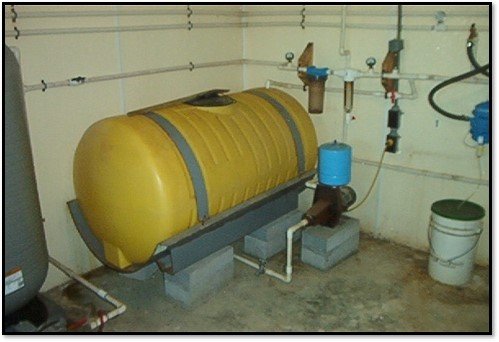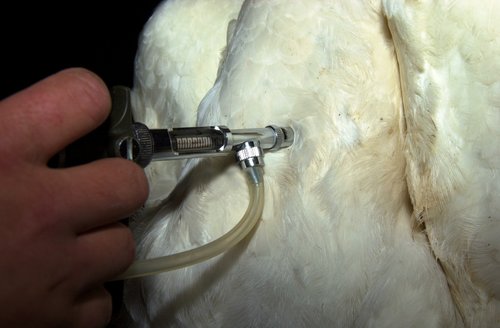Ensuring Healthy Flocks: Best Practices for Turkey Vaccination
Proper vaccination procedure will ensure that your flock is protected against certain health challenges. Using the correct procedures ensures effectiveness while minimizing stress on the birds. The following are the procedures and considerations for three different vaccination methods: water, spray and injection. Always remember to follow vaccine manufacturer instructions when storing and preparing the vaccine.
Water Vaccination: A Low-Stress Approach
Water vaccination is, in general, the least stressful for the birds and less labor-intensive for farm staff. Be sure to properly store, handle, and mix the vaccine.
Preparing waterlines for vaccine
- Turn off chlorine and run vaccine stabilizer 24 hours before vaccination
Day of vaccination
- Flush tank and pump with clean water
- Turn off water to flock (6:00 am preferably)

- Raise drinkers so the birds can't reach (7:00 am)
- Fill tank with required water to last for 2.5 - 3 hours (normally this is about 25-30% of the daily water consumption)
- Mix vaccine and stabilizer in a clean bucket (used only for vaccinations) and add to tank, stir vigorously
- Include dye to track vaccine water

- Turn on pump and flush drinker lines until dye comes out at the far end of the line
- Dump all bell drinkers into a bucket until blue dye appears, prior to lowering the lines
- Be certain all nipple line cups are blue prior to lowering the lines
- Restrict water access for 1 - 1.5 hours (calculate back from the time the drinkers were raised)
- Lower drinkers to bird level and allow access
- Stir the flock every 15 minutes to encourage drinking
- Vaccine should be consumed in about 2.5 - 3 hours
- Perform 100 bird tongue checks to confirm vaccination accuracy
- Return to normal water sanitation system about three hours after vaccine is finished
Spray Vaccination: Effective for Mass Immunization
Below are some common considerations when performing spray vaccination.
- Provide for 500 or 1000 doses more than the total number of animals to vaccinate (as per the vaccine manufacturer instructions)
- Add water into the bottles and homogenise the solution in the bottle
- Using the syringe, fill up the contents of the bottle from the bottle into the spray container
- Once ready, the vaccination must be done within one hour
- In the summer during hot temperatures, spray the vaccine in the morning when temperatures are the lowest
- Droplets should be uniform
- When spraying, walk across the barn from front to back, covering all areas of the barn
Injection Vaccination: Direct and Precise
Below are some common considerations when performing injection vaccination.
- Use clean, disinfected syringes and new needles. Change the needles every 100 injections
- Check the that the volume injected corresponds with the amount recommended by the vaccine manufacturer

Conclusion
Following proper vaccination procedures helps safeguard poultry health and productivity. Whether using water, spray, or injection methods, careful handling and adherence to best practices are crucial. By implementing these protocols, poultry producers can maintain healthier flocks and ensure optimal vaccine efficacy.
